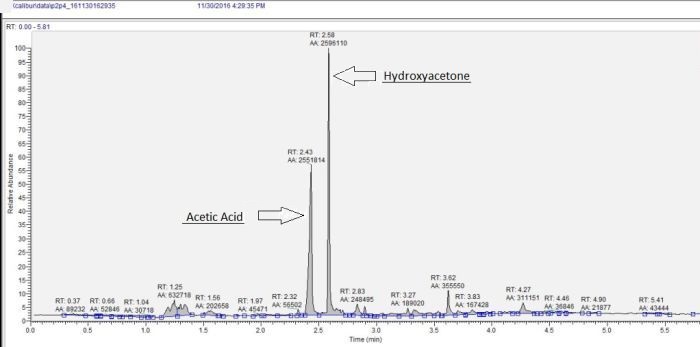

Results
The results were analyzed using a mass spectrometer running Xcaliber software and a gas chromatogram with a DB-5 column. This equipment is commonly referred to as a GCMS (gas chromatogram mass spectrometer). The products exited the reactor were immediately injected into the GCMS to obtain the chemical make-up of the product. The product was then separated into samples for further evaluation.
Results from Sugar Beet Pulp
Sugar beet pulp, which consists of cellulose, hemicellulose, pectin and some residual sugar, was processed and the resulting product was then analyzed. The GCMS results are shown in Figure 1. The x-axis is the time that each chemical exits the gas chromatogram. That chemical is then measured and identified by the mass spectrometer. The lightest chemicals come out first and the chemicals show up as the grey peaks in the figure. The size of the peak is a measurement of the amount of that chemical in the product. The larger the peak, the larger the amount of that chemical in the product. For the beet pulp the primary products are hydroxyacetone and acetic acid, which are identified in the figure.
Figure 1. Results from sugar beet pulp.

Picture of the product as it exits the reactor.

Results from Sugars and Starches
Sugars and starches all produce similar results. When they're processed the results look like those in Figure 2. Hydroxyacetone and acetic acid are again the largest products but substantial amounts of acetone, furfural, cyclopenteneone and methyfurfural are also in the product.
Figure 2. Results from sugars and starches.
